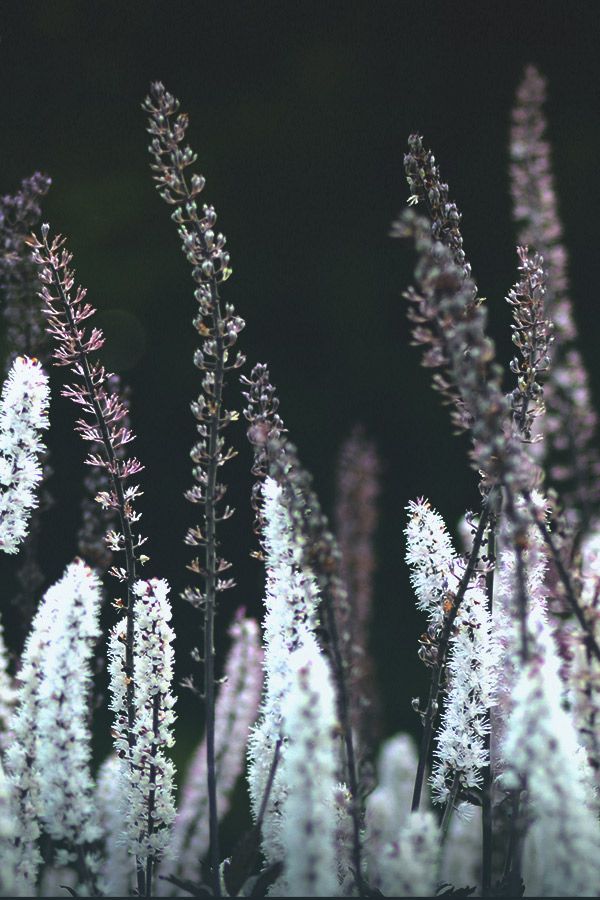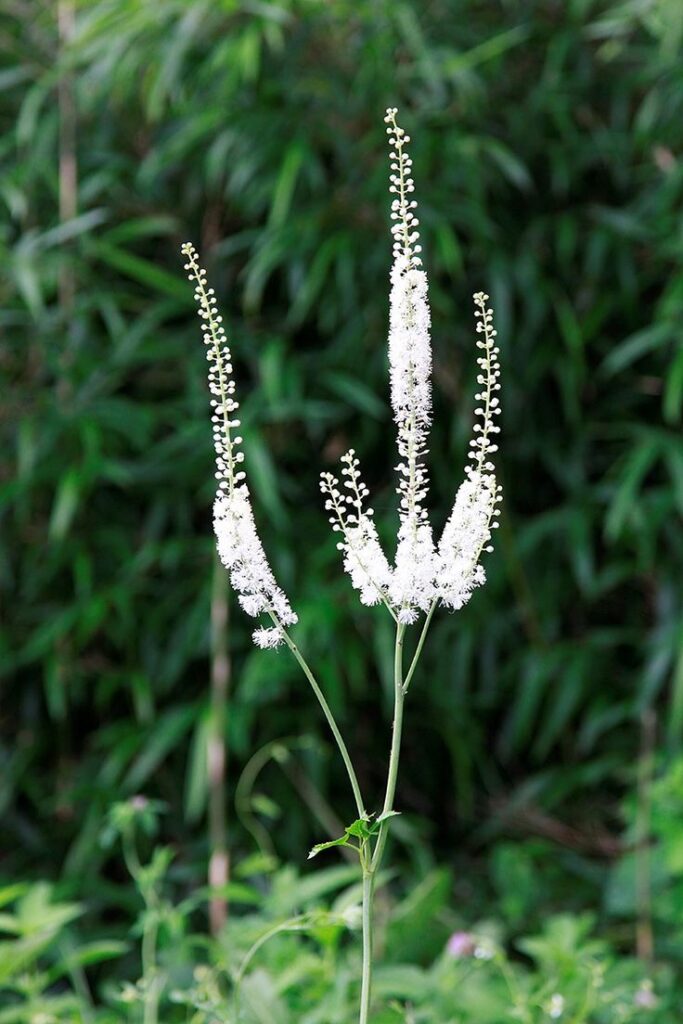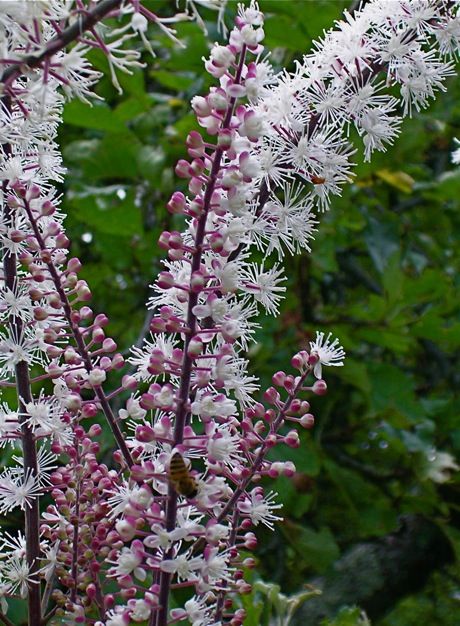There are some herbs that feel like old spirits, deeply rooted in the shaded heart of the woods. Black cohosh is one of these—tall, spectral, and mysterious, its wand-like flower spikes rising from glossy leaves like ghosts in the morning mist. My first encounter was in a cool Appalachian hollow, where the scent of earth and leaf litter was thick, and the hush was broken only by birdcall and the gentle whisper of wind through old trees.

Rooted in Tradition—Respected by Science
Actaea racemosa (syn. Cimicifuga racemosa), known as black cohosh, snakeroot, or fairy candle, is a true child of the American forest. Indigenous peoples turned to its gnarled, inky-black roots for generations to soothe pain, calm menstrual cramps, and ease the transition through menopause. The colonists learned quickly, adding black cohosh to their own pharmacopeia for everything from snakebite to “female complaints.”
Science has since confirmed some of these traditional uses. The root is rich in triterpene glycosides, phytoestrogens, and aromatic acids, which can help balance hormones, relieve hot flashes, ease muscle aches, and reduce inflammation. For many, black cohosh is still a trusted ally for menstrual and menopausal comfort.
Growing Black Cohosh: Cultivating the Forest’s Shadow
If you’re drawn to grow black cohosh, be patient—it is a plant for those who honor slow magic. It thrives in moist, rich woodland soil, dappled shade, and undisturbed ground. Sow seeds in autumn or set root divisions in early spring, and give them plenty of room—these beauties can reach up to six feet, their airy white plumes lighting up the darkest corners of a garden.
Black cohosh takes time to establish, often not flowering until its third or fourth year. But once settled, it will reward you with lush foliage and hauntingly beautiful blooms each summer. Harvest roots in late fall after the leaves have died back, but always leave enough behind for the patch to recover—wild populations have suffered from overharvesting, so ethical cultivation is essential.
Black Cohosh in the Wild
Wandering the eastern forests of North America, especially the Appalachians, you might spot black cohosh among ferns and wild ginger. It prefers north-facing slopes and cool ravines, thriving where moisture lingers and the sun only dances through the leaves.
Black Cohosh in Everyday Use
For the herbalist, black cohosh root is most often dried and decocted—simmered slowly to draw out its deep, earthy medicine. Some blend it into tinctures, others into teas (always in small doses), especially for women seeking support through the changes of life. There’s a quiet power in black cohosh—a medicine for the patient, the gentle, and those who find wisdom in the shadows.


Black Cohosh Fact Sheet
- Botanical Name: Actaea racemosa (syn. Cimicifuga racemosa), Black Cohosh, Fairy Candle, Snakeroot
- Active Compounds: Triterpene glycosides (actein, cimicifugoside), phenolic acids, phytoestrogens, aromatic acids
- Parts Used: Rhizome and roots (dried)
- Traditional Uses: Menstrual discomfort, menopause symptoms (hot flashes, mood, night sweats), muscle pain, rheumatism, mild sedation
- Modern Science: Shown to reduce menopausal symptoms, mild anti-inflammatory and pain-relieving effects, mild hormonal modulation; studied for use in PMS, arthritis, and menopause
- How to Grow:
- Plant seeds in fall (needs cold stratification) or use root division in spring
- Moist, rich woodland soil; partial to full shade
- Slow to establish; blooms after 3–4 years
- Harvest roots in fall (ethically and sparingly)
- Plant seeds in fall (needs cold stratification) or use root division in spring
- Where It Grows Wild:
- Native to eastern North America, especially Appalachians and hardwood forests
- Prefers shady, moist, undisturbed woodland slopes and ravines
- Native to eastern North America, especially Appalachians and hardwood forests
- Preparations:
- Dried root decoction (tea), tincture, capsules
- Most commonly for menopause, PMS, or musculoskeletal pain
- Dried root decoction (tea), tincture, capsules
- Cautions:
- Not for use in pregnancy or with hormone-sensitive cancers
- May cause digestive upset or headache in sensitive individuals
- Use only in moderation and consult a knowledgeable healthcare provider, especially if on medication
- Not for use in pregnancy or with hormone-sensitive cancers
***As with all powerful roots, approach black cohosh with respect—its strength is quiet, but profound.***

Leave a Reply